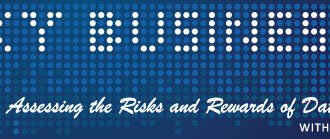Tom Davenport kicked off the second day of Predictive Analytics World with a keynote on the new era of quantitative, or data-driven business. Various analytic threads – web analytics, HR analytics, actuarial, predictive marketing and supply chain – are coming together in really what is best described as Enterprise analytics. The world is changing and while there are lots of possible strategies, not changing, not looking out from a specific area is not going to work.
Tom Davenport kicked off the second day of Predictive Analytics World with a keynote on the new era of quantitative, or data-driven business. Various analytic threads – web analytics, HR analytics, actuarial, predictive marketing and supply chain – are coming together in really what is best described as Enterprise analytics. The world is changing and while there are lots of possible strategies, not changing, not looking out from a specific area is not going to work.
Decision making, making better decisions, is what is driving analytics. As I like to say, we must begin with the decision in mind. Most companies are going to struggle to re-engineer their business to be analytically-driven. So we need a process:
- Decide on important decisions (Begin with the decision in mind)
- Make the decisions better (make sure to include Decision Analysis)
- Systematically review
- Institutionalize
Tom tells a story about asking about following up on how companies improved decision making. The number 1 approach was using analytics but the list looked like:
- Analytics
- Changes in culture/leadership
- Better data
- Change the business process (the rules around the decision)
- Training the people at the front end of the process
- Managing overrides
It is not enough to do analytics – you must have analytics and organizational and other technologies available. In fact the average number of things involved was over 5 – more than 5 different things were changed to improve a decision. Tom’s report on this is available at sas.com/decisions.
Finally Tom repeated his emphasis on the need to close the decision loop – systematic review of how well the decision is being made. Ongoing Decision Analysis – becoming a “student of error” or conducting “after action reviews” – is critical. Tom’s example was of an institutionalized decision analysis process for strategic decisions (over $100M) but it is equally true for operational decision processes – create the mechanism for reviewing and improving decisions before implementing the decision.
New methods are emerging for doing this – what Tom calls Agile Analytics based on more iteration, shorter cycles, frequent deliveries. He and I engaged on a debate about this (Its time to industrialize analytics, Agile vs Industrialized from Tom, agile and industrial analytics) but this need for more rapid iteration in analytic development is clear.
One critical element of analytics is building relationships between IT, analytic and business people – what I call the three legged stool of decision management. Over and over, successful companies Tom works with are telling him that this relationship between these groups and their ability to effectively communicate is critical. And as an Intel fellow (the Chief Mathematician at Intel) says “it’s not about the math”, it’s about the relationships.
Key new skills then for analytics people:
- Tell a story with your analytics – the business has to understand what it is telling them
- Stand firm when necessary – have the courage to stick to what the data tells you
- Help frame the decision – begin with the decision in mind and make sure the alternatives, the outcomes are well defined
- Fix it – don’t just identify problems but thing about how to fix it and then actually fix it!
Tom sees new analytic architectures coming. Old BI he says is focused on multi-purpose support of business users. We have tried to provide self-service, general purpose tools and lots of data to business people but it does not really work. This is going to evolve towards a multi-purpose analytic sandbox for professional analysts to experiment and explore; a set of embedded analytics (Decision Management applications); and third a set of single-purpose analytic applications for business people – helping support a specific decision.
He also sees a new analytical culture – one where facts and analysis are the primary way of making decisions. An emphasis on “test and learn” approaches and on asking “where’s your data”. And finally never resting on your analytic laurels – always being open to learning new things.
Some advice from Tom:
- A new model for analytics is emerging
- This will require new management approaches
- Analytical leaders at every level can make an impact
- This is not business as usual but a major sea change
- It’s all about making better decisions






